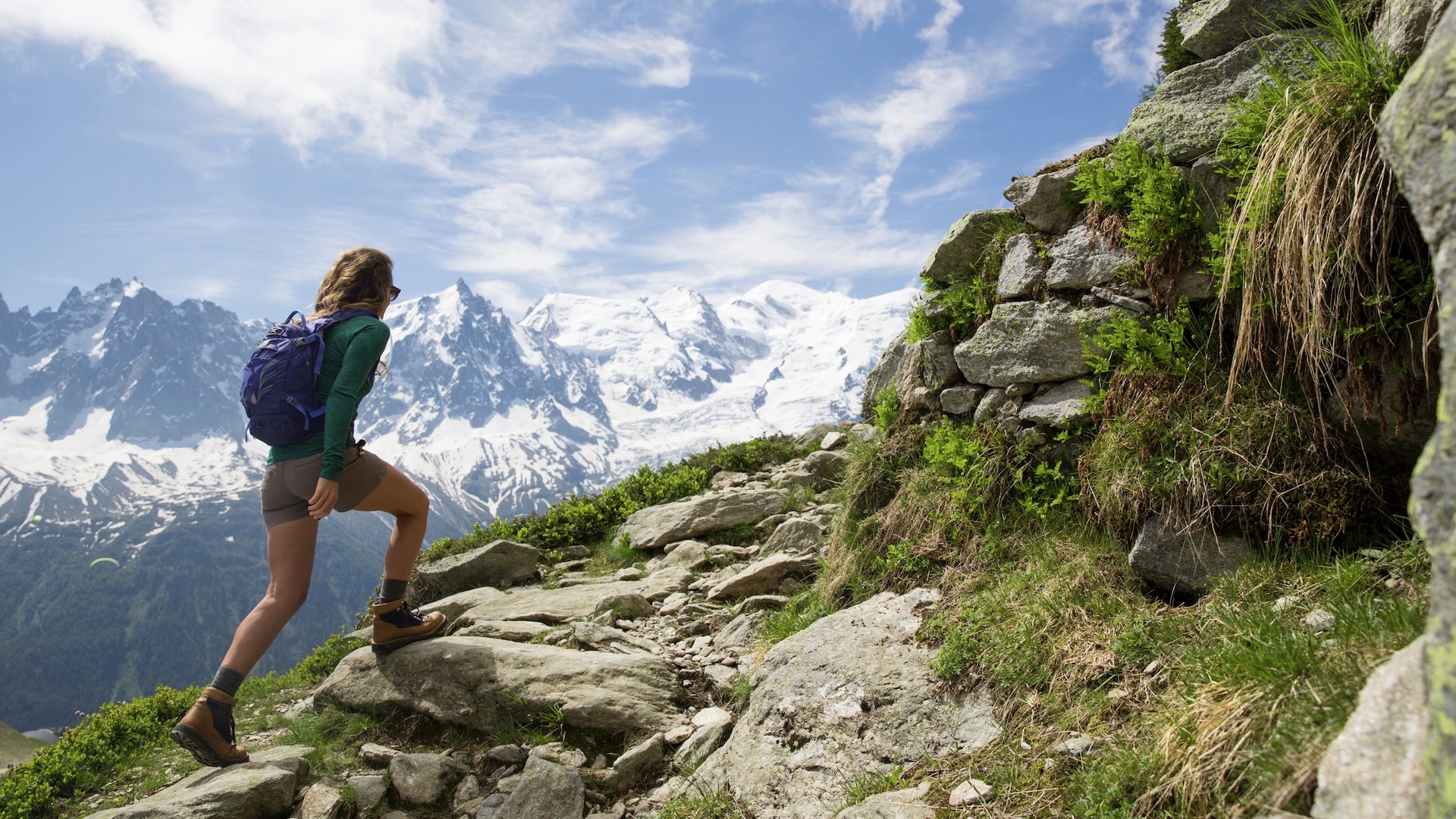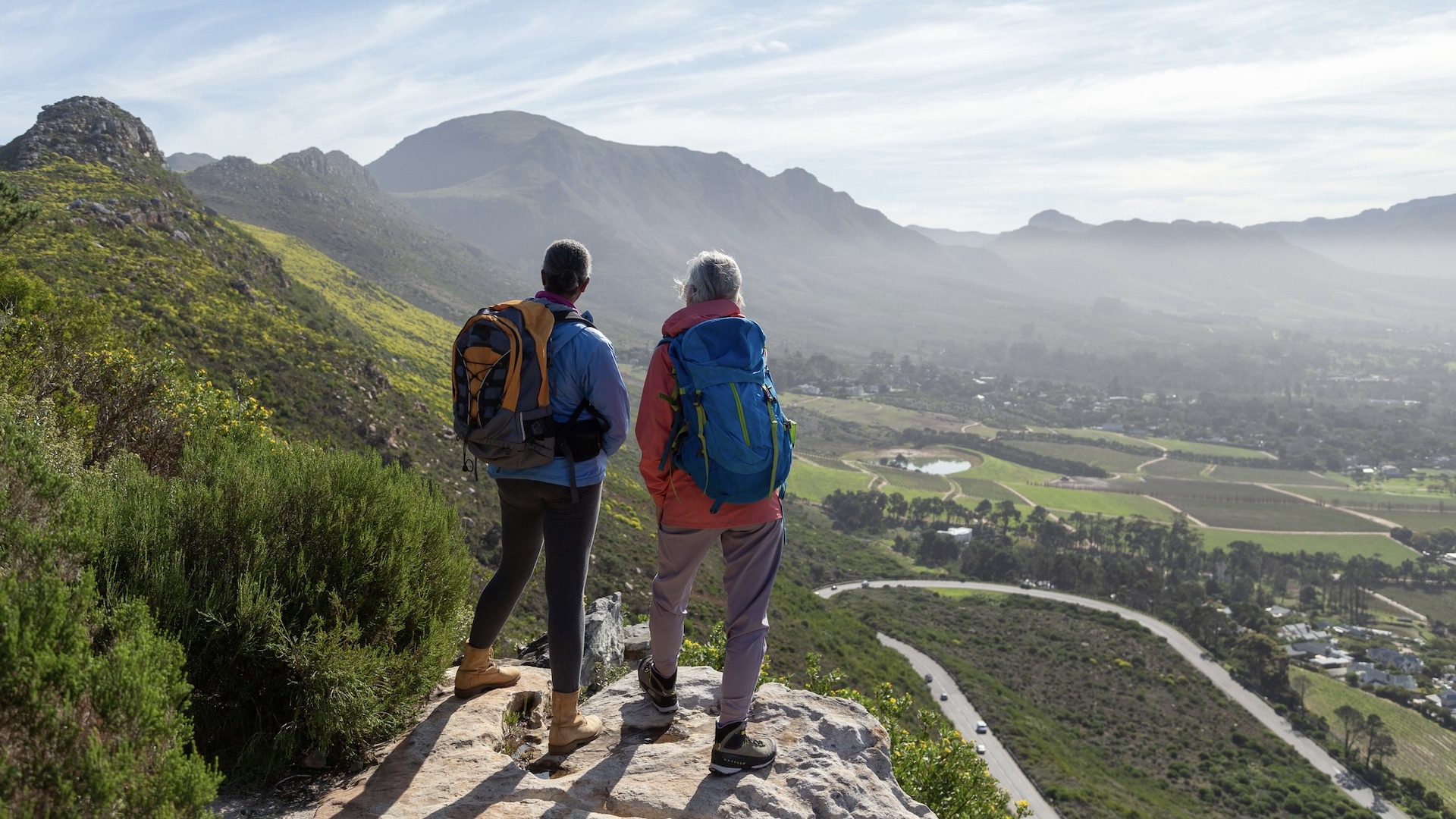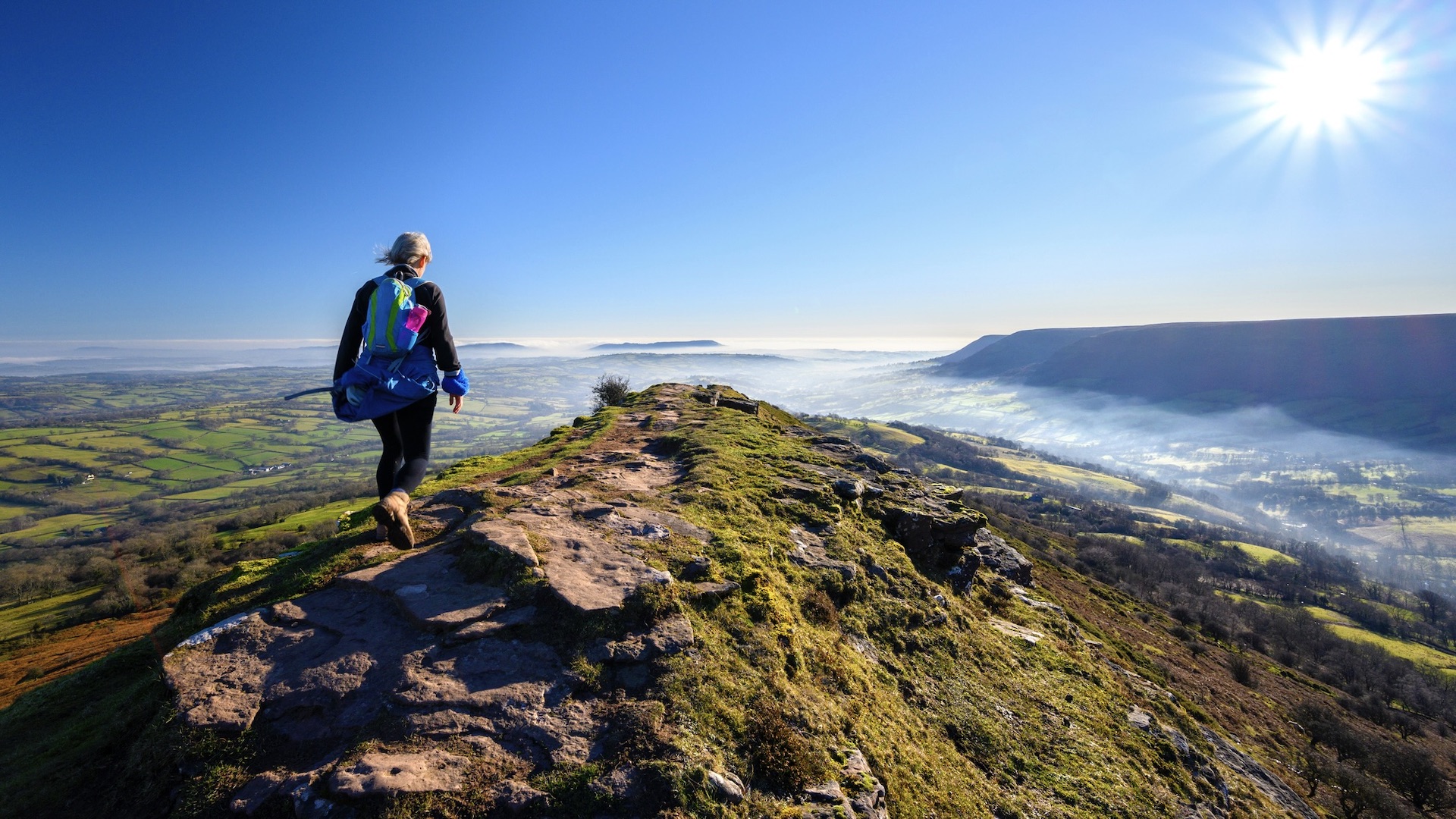Can you rely on a budget backpack for hiking?
What makes a hiking backpack more expensive, and is a cheaper version is good enough for your chosen activities?

If there is one thing you want to ensure when choosing a backpack for hiking – whether you are hoping to buy a budget backpack or a more expensive backpack – it’s comfort. A backpack this does not fit well, nor carry a load comfortably, will be quickly pushed to the back of a cupboard, regardless of how much you paid for it. So, it’s a good idea to try on a backpack before you buy.
Other factors to consider will be volume (how much you can carry in the backpack), quality of materials, padding at the hips and shoulders, the back system, adjustability, waterproofing, pockets and other features and details.
Relying on a budget hiking or day backpack will also be dependent on the sort of activities you hope to do. For example, a short stroll with a light load will require a very different style and quality of backpack compare to one that you use for a multi-day backpacking adventure with wild camping overnights.
Taking a look at our best day packs guide, you’ll see packs ranging from £58 (RRP) for a Mountain Hardwear UL 20 to £185 for Sea to Summit Flow 35L Dry Pack.
Meanwhile, our best buy hiking backpacks guide, lists backpacks across range of prices from under £60 for the Craghoppers Classic Rolltop Backpack 20L, through £110 for the Berghaus Trailhead 65 and Montane Trailblazer 44 to over £200 for the Berghaus MTN Guide 45+, Osprey Mutant 52 and Gregory Katmai 55.
Likewise, among the best women’s hiking backpacks, the price range includes three packs at around £90, to several priced at more than £200 and even one, the Osprey Sopris Pro Avy Airbag with avalanche airbag, at £950.
The list of features and pros and cons for different packs vary widely and not always related to price
All the latest inspiration, tips and guides to help you plan your next Advnture!
But whether you can rely on a budget backpack will depends on where you plan to go hiking, for how long, how much you want to carry, what the weather conditions will be like and what features you want or need compared to other details you can manage without.
We take a closer look at whether you can rely on a budget hiking backpack.

What makes a hiking backpack more expensive?
In some cases, it’s the brand name or brand "acclaim" that pushes up the price of a product. There are companies that seem to be able to routinely command higher prices. For some brands, the price is justified by the level of research and development that goes into each product, including hiking backpacks.
The technology of fabrics, back systems and many different features and details can also push up the price. For example, a back system that allows air to flow where you might sweat and provides lots of adjustability will make a product more costly to design and manufacture than one that has a simple, static back.
In a similar way, hip belts and shoulder straps designed with high levels of padding and more ergonomically created to suit different physiques will obviously cost more than a hiking backpack with simple webbing at the waist and less padded shoulder straps.
Although, saying all this there are some packs that cost more simply because they have less! A lightweight backpack for hiking – and for running – might well have called for more research, design and newly developed fabrics (light but durable), which can lead to higher prices.
In this way, packs that are have lightweight but still durable fabrics and include thoughtful details and features that are specially designed to suit a particular activity, such as fast-hiking or ultra-running, can often seem pricey because they look simplistic.
Larger volume packs are usually more expensive than smaller volume packs, especially across a brand’s collection.
Brands, such as Patagonia, will often charge more if they can list a number of positive eco and ethical credentials, such as using fabrics that are recycled or PFC-free.
Again, the argument is that it takes more research and development to make eco-friendly products that have less impact on the environment. In addition, companies that employ Fair Trade principles, including paying a higher wages, will obviously have higher prices for their products.
Other features that might make hiking backpacks more expensive include waterproof fabrics, rain covers, pockets and zips, different lid closure systems, hydration bladders, hooks and loops for stowing trekking poles or an ice axe, safety extras such as an SOS whistle and designs to specifically suit the female physique.

Do I need a more expensive hiking backpack?
Whether you need a more expensive backpack, or not, will most likely depend on where and for how long you plan to go hiking. If it’s a fairly short outing on low-level country trails in fine weather, the chances are you will be able to manage with a cheaper and less sophisticated backpack. For example, you will not need to carry a heavier load of spare kit and it’s likely you will not need such high comfort levels of the back system, shoulder straps and hip belt.
In contrast, if you are planning a long hiking adventure that will see you heading off into the hills or mountains for many days and carrying all the kit you need for wild camping, then a backpack with higher levels of comfort and features will be essential. The last thing you want in this situation is to have pains and rubs from an uncomfortable hiking backpack.
A more expensive hiking backpack made with good quality materials and boasting lots of useful features, as well as ticking eco and ethical credential boxes, might also last you much longer than a more budget-friendly backpack.
Of course, there are always products that sit in the mid-range, between budget and expensive, that may well offer good comfort levels and the right number of features. It’s usually a case of judging each backpack on its own and considering what you really need and what you can compromise on.
And, perhaps, a good way to look at it is to have a budget pack that you use for shorter and less intense outings in the summer season, plus a more expensive pack that you reserve for longer adventures or for hikes where the conditions are not be so favourable, or comfort for many hours or days is vital.
There are also situations where you might choose to spend more on a hiking backpack such as a pack for winter mountain hiking compared to summer hiking,. In winter, you will need a backpack that is more weather resistant and durable, with a larger volume for more kit and features for carrying an ice axe, for example.
Many hikers also have their favourite brands. It could be you are a fan of Osprey backpacks, for example, because you know the packs are feature-filled, comfortable and durable. While Osprey packs are often pricier than other brands they do offer lots of great features.
Which brands can you recommend for budget hiking backpacks?
In our guide to the best day packs, the cheapest is the Mountain Hardwear UL 20, which offers the benefits of being lightweight but practical with a side-pocket design to save even more weight. Although, the smaller pack size means you will need to think carefully about what you pack and what you leave at home. The shoulder straps and hip belt are also fairly minimalist.
In our guide to the best hiking backpacks, the cheapest is the Craghoppers Classic Rolltop Backpack 20L, which is also a daypack. To assess whether this pack is for you, it’s worth looking at the pros, including a good eco-conscious design, roll top opening, water resistant material, good range of pockets and zips, compared to the cons, of not being suitable for more technical terrain, no equipment attachments and no technical back panel.
Meanwhile, the Berghaus Trailhead 65, at a price of £110, seems very good value for money. Our reviewer agreed, suggesting it is a pack that is “great value for its size”. It also has a customisable back length, excellent access to kit inside and a rain cover. Although, it is noted that the backpack is not as lavishly padded as some of its competitors
The Montane Trailblazer 44 at £110 also looks to be good value given its features, although you need to consider the facts that it is lidless, has only a simply back system and the mesh pockets are liable to snag. Plus-points of this hiking backpack include a lightweight product with good capacity and a practical harness and hipbelt pockets.
Among the female-specific packs picked out by our reviewers as best buys, there are three packs priced at £90 or lower (shop around for cheaper prices). The Deuter Gravity Motion SL has one major negative and there is no hip-belt, but it scores on a number of other points, including dedicated shoe and chalk pockets, if this is something you think you might need.
The Thule Vital 3L has a couple positives as picked out by the reviewer including easy to reach external phone and snack pockets and a magnetic sleeve on hydration hose that auto connects to shoulder strap, although it is let down, if this matters to you, by the fact the backpack comes in only one colour and that is a silver grey.
Meanwhile, another more budget friendly option in our best women’s backpacks is the Salomon Out Day 20 + 4 L, which is acclaimed for being lightweight, boasting a great back panel and having multiple handy pockets. A negative to consider is that the shoulder straps do not sit well unless they are clipped together.
As you can see from all the pros and cons above, the choice of a more budget pierced backpack for hiking will spend on what features are important to you.

More tips for buying a backpack
Think carefully about what you will be using the backpack for. Whether you can rely on a budget backpack, or not, will depend on your planned type of activity and the features you will need in the pack.
Shop around for better prices, look at last year's models and make sure you try a pack for fit and comfort.
Buy second hand for more budget-friendly options.
Buy female specific if you are a woman looking for better fit and comfort.
Buy a couple of different sizes of packs to suit different outings.
Smaller sized packs are often cheaper than larger volume packs but you should think carefully about all that you will need to carry before buying a cheaper, smaller backpack.

Fiona Russell is a widely published adventure journalist and blogger, better known as Fiona Outdoors. She is based in Scotland and is an all-round outdoors enthusiast with favorite activities including trail running, mountain walking, mountain biking, road cycling, triathlon and skiing (both downhill and backcountry). Aside from her own adventures, Fiona's biggest aim is to inspire others to enjoy getting outside and exploring, especially through her writing. She is also rarely seen without a running skort! Find out more at Fiona Outdoors.
